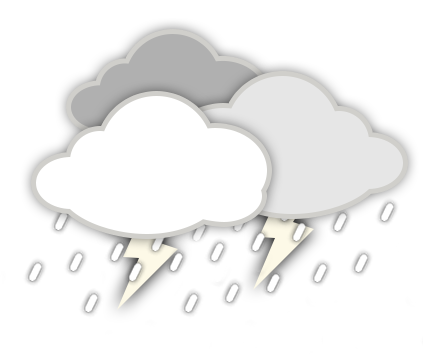TACLOBAN, Philippines — Pope Francis arrived in the typhoon-hit Philippine city of Tacloban on Saturday, where he was met by a huge crowd drenched from waiting for hours in the rain.
The pope will celebrate a Mass in an open field near the airport, and have lunch with survivors of Typhoon Haiyan, the November 2013 storm that leveled entire villages and left more than 7,300 people dead or missing.
A police official estimated the crowd at 150,000 and said tens of thousands more are lined up outside. Wearing plastic raincoats, the festive crowd clapped in unison to blaring music welcoming the pope, cheering when they heard the pope's plane land.
Villagers hung banners welcoming the pope from the bow of a steel-hulled cargo shop that smashed houses when it was swept in by Haiyan and remains on shore.
"Pope Francis cannot give us houses and jobs, but he can send our prayers to God," said Ernesto Hengzon, 62. "I'm praying for good health and for my children too. I am old and sickly. I'm praying that God will stop these big storms. We cannot take any more of it. We have barely recovered. Many people are still down there."
The rains were brought by approaching Typhoon Mekkhala, which has prompted authorities to suspend ferry services to Leyte province, where Tacloban is located, stranding thousands of travelers including some who wanted to see the pope.
Francis is on the second full-day of a three-day visit to the Philippines. He was in Sri Lanka earlier in the week.
He issued his strongest defense yet of church teaching opposing artificial contraception on Friday, using a rally in Asia's largest Catholic nation to urge families to be "sanctuaries of respect for life."
Francis also denounced the corruption that has plagued the Philippines for decades and urged officials to instead work to end its "scandalous" poverty and social inequalities during his first full day in Manila, where he received a rock star's welcome at every turn.
Security was tighter than it has ever been for this pope, who relishes plunging into crowds. Cellphone service around the city was intentionally jammed for a second day on orders of the National Telecommunications Commission and roadblocks along Francis' motorcade route snarled traffic for miles (kilometers).
Police vans followed his motorcade while officers formed human chains in front of barricades to hold back the tens of thousands of wildly cheering Filipinos who packed boulevards for hours just for a glimpse of his four-door Volkswagen passing by.
Police said another 86,000 gathered outside one of Manila's biggest sports arenas, capacity 20,000, where Francis held his first encounter with the Filipino masses: a meeting with families. There, he firmly upheld church teaching opposing artificial contraception and endeared himself to the crowd with off-the-cuff jokes and even a well-intentioned attempt at sign language.
Francis has largely shied away from emphasizing church teaching on hot-button issues, saying the previous two popes made the teaching well-known and that he wants to focus on making the church a place of welcome, not rules. But his comments were clearly a nod to the local church, which recently lost a significant fight when President Benigno Aquino III pushed through a reproductive health law that allows the government to provide artificial birth control to the poor.
"Be sanctuaries of respect for life, proclaiming the sacredness of every human life from conception to natural death," Francis exhorted the crowd. "What a gift this would be to society if every Christian family lived fully its noble vocation."
He then deviated from his prepared remarks to praise Pope Paul VI for having "courageously" resisted calls for an opening in church teaching on sexuality in the 1960s. Paul penned the 1968 encyclical "Humanae Vitae," which enshrined the church's opposition to artificial birth control.
Francis noted that Paul was aware that some families would find it difficult to uphold the teaching and "he asked confessors to be particularly compassionate and understandable for particular cases."
But he nevertheless said Paul was prescient in resisting the trends of the times.
"He looked beyond. He looked to the peoples of the Earth and saw the destruction of the family because of the lack of children," Francis said. "Paul VI was courageous. He was a good pastor. He warned his sheep about the wolves that were approaching, and from the heavens he blesses us today."
Francis also urged families to be on guard against what he called "ideological colonization," an apparent reference to gay marriage, which isn't legal in the Philippines. The church opposes gay marriage, holding that marriage is only between man and wife.
The government has declared national holidays during the pope's visit, which culminates Sunday with a Mass in Manila's huge Rizal Park, and the crowds responded by turning out in droves to welcome him. Authorities estimated that between 700,000 and 1 million people lined his motorcade route in from the airport Thursday night.
"It is the wish of every Filipino to see him, and if possible, to interact with him, talk to him," said Alberto Garcia, a 59-year-old electrician who was among a crowd of about 100 people who gathered in front of a giant screen mounted on a truck at a public square to watch Friday's Mass. "Because that is impossible, just by being here we can take part in his mission to visit and bring grace to this country."
Francis was clearly energized by the raucous welcome, stopping several times Friday to kiss children brought up to him once he entered the presidential palace grounds. His motorcade didn't stop along the route, though, for him to get out to and greet the crowd as he likes to do.
It remains to be seen if he will chafe at the intense security provided by authorities, who appeared to leave nothing to chance. They have good reason to go overboard after Pope Paul VI was slightly wounded in an assassination attempt during his visit in 1970 and St. John Paul II was the target of militants whose plot was uncovered days before his 1995 arrival.
About 50,000 police and troops have been deployed to secure the pope in a country where relatively small numbers of al-Qaida-inspired militants remain a threat in the south despite more than a decade of U.S.-backed military offensives.
Associated Press writers Oliver Teves and Teresa Cerojano in Manila contributed to this report.





